Imagine travelling to the wilds of Siberia to see a woolly mammoth lumbering through its natural habitat. Or getting up close to a living, breathing Tasmanian tiger. Thanks to developments in cloning and gene-editing technology, the prospect of bringing back extinct animals is looking more likely than ever.
De-extinction is about creating populations of healthy, genetically vibrant animals that can be released into the wild where they’ll be able to breed naturally and contribute positively to the environment. But it’s not just about bringing back the dead.
The same techniques being developed to help resurrect extinct species can also be used to help save living species on the brink of extinction.
So how does de-extinction work, what are its limits, and do we really need to bring back long-dead animals?
How feasible is de-extinction?
De-extinction is very much a science in development, but it’s moving at a rapid pace. The first milestone was in 2003 when European scientists resurrected the Pyrenean ibex, a type of mountain goat that had gone extinct a few years earlier.
Sadly, the kid died a few minutes after she was born, so the poor ibex was not just the first animal to be brought back from extinction, but also the first to go extinct twice. Since then, scientists have been refining their methods and developing new de-extinction techniques.
Read more about extinction:
- Zoology in 30 seconds: conservation and extinction
- Has an animal ever evolved itself into extinction?
In Australia, Prof Michael Archer and colleagues are working on bringing back the gastric-brooding frog, a remarkable animal that nurtured its young in its stomach before burping up fully-formed froglets. So far, the team has produced embryos that ‘almost’ turn into tadpoles but not quite.
The next step is to persuade these embryos to turn into frogs, something that Archer is convinced they will achieve.
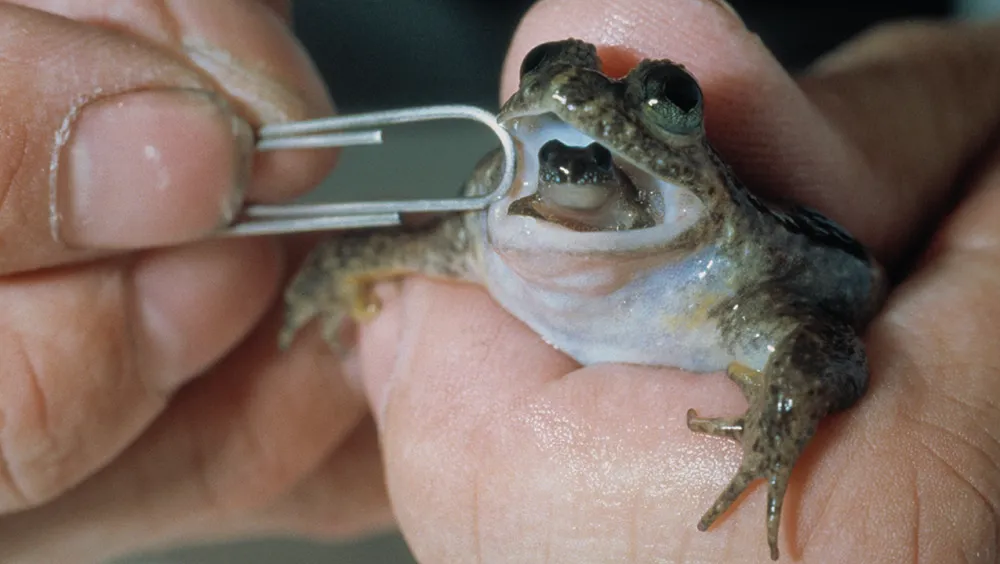
What other animals could we make de-extinct?
In America, scientists are working on bringing back the passenger pigeon, a rosy-breasted bullet of a bird that once flocked in the billions; and the heath hen, a stumpy avian wallflower that lived in the scrubby plains of New England.
In the UK, researchers are considering whether or not to bring back the so-called ‘Penguin of the North’, the great auk.
Meanwhile, in South Africa, they’re trying to revive the quagga, a bizarre zebra-like creature with a stripeless behind! In South Korea, Japan and the US, three separate teams are racing to bring back that most iconic of Ice Age beasts, the woolly mammoth.
How do you ‘de-extinct’ something?

It depends on the species. Some projects use ‘back-breeding’. Quaggas, for example, are related to living zebras. So scientists are choosing the zebras that look most like quaggas and letting them breed. The aim, over successive generations, is to create animals that look like quaggas.
Other projects, however, involve assisted reproduction and some rather elegant genetics.
Some are using cloning; others, stem cell science. For example, Prof George Church at Harvard Medical School aims to create a mammoth by ‘editing’ mammoth genes into elephant cells.
Will these animals be the same as the originals?
No, they can never be exactly the same. When he is done, Church will have created not a true mammoth, but an elephant with a sprinkling of judiciously placed mammoth DNA.
It will have long, shaggy fur, thick rolls of insulating body fat, and haemoglobin that can ferry oxygen around the body at sub-zero temperatures.
This will be an animal that looks like a mammoth, but is really an elephant whose DNA has been altered so it can live in the cold. You could call it a ‘mammophant’ if you like, or an ‘elemoth’.

Added to that, we now realise that all animals are a product of their DNA and of the environment in which they live, along with the interaction between the two.
Created in a lab, nurtured in the womb of a modern elephant, and raised in a world that has changed radically since mammoths went extinct thousands of years ago, the experiences of this new-age pachyderm will be different to those of its Ice Age doppelganger… all of which will conspire to make it less similar to the original woolly mammoth.
But does this matter? Many will argue that, if the de-extinct animal looks and acts like its predecessor, then that’s good enough.
Could we resurrect dinosaurs?
Sadly (or thankfully), a real-life Jurassic Park is out of the question. There are limitations on which species can undergo de-extinction. First up, scientists need to have a source of the animal’s DNA.
Sometimes this comes from preserved museum specimens or from cells that have been collected from live animals and frozen away. Sometimes it can come from fossils.
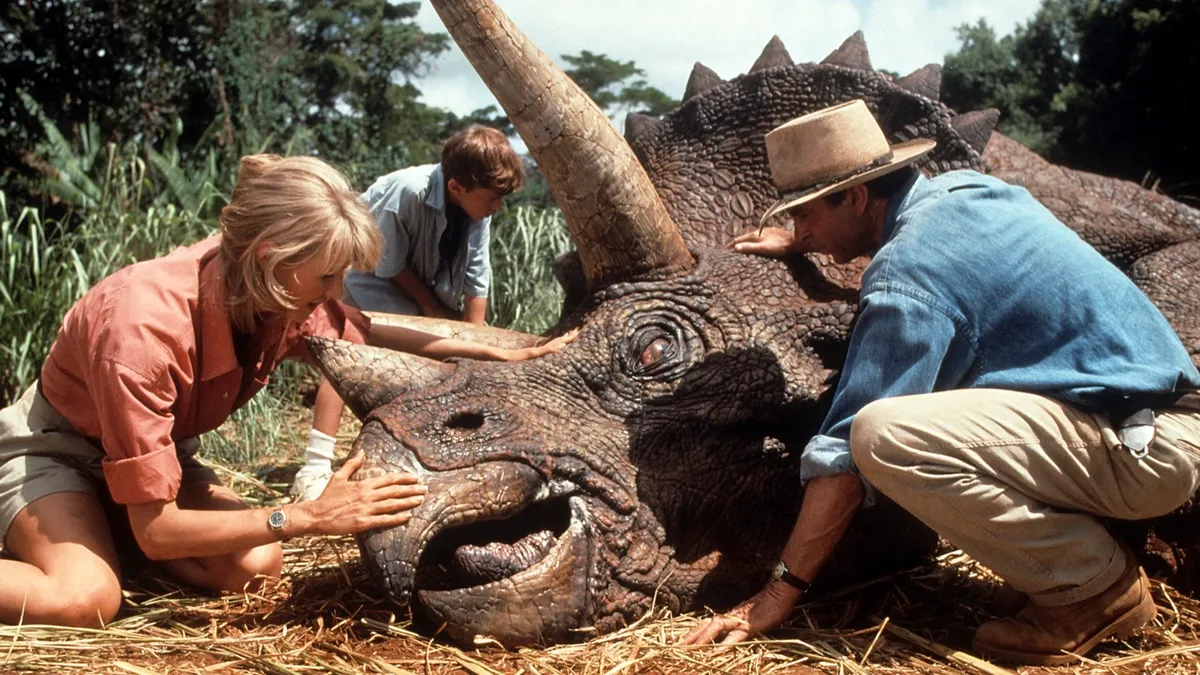
But DNA disintegrates over time, meaning that after a couple of million years there is simply no DNA left. Dinosaurs famously went extinct 65 million years ago, so their DNA is lost forever. No DNA, no dinosaurs. Apologies, Hollywood.
And if you’re hoping to meet a dodo, that icon of extinction, then don’t hold your breath either. Although it died out comparatively recently – a few hundred years ago – its final resting place, Mauritius, was simply too hot to preserve its DNA.
What’s the point of de-extinction?
There are lots of good reasons to bring back extinct animals. All animals perform important roles in the ecosystems they live in, so when lost species are returned, so too are the ‘jobs’ they once performed.
Woolly mammoths, for example, were gardeners. They knocked down saplings, ate grass and fertilised the ground via their nutrient-rich dung. But when they disappeared, the gardening stopped, biodiversity plummeted and the lush mammoth steppe was replaced by species-poor tundra.
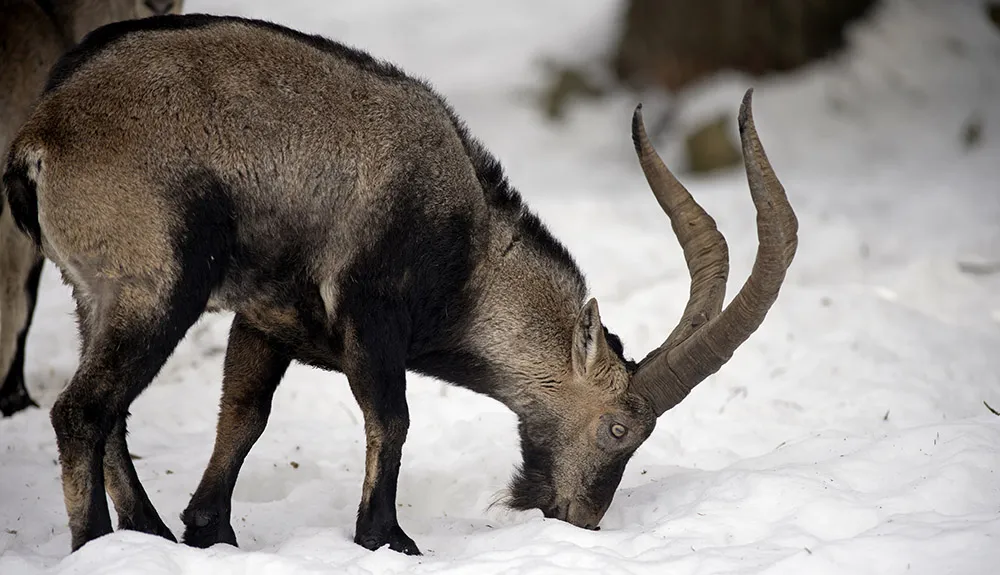
Studies suggest that if large grazers were returned to the far north, biodiversity would increase again.
It could be the same for other de-extinct animals, too.
De-extinction provides a means to enhance biodiversity and help restore the health of ailing ecosystems. It could be a conservation tool, and by choosing to bring back animals that are genetically unique – like the gastric-brooding frog or the Tasmanian tiger (a stripy, pouched, dog-like marsupial also known as the thylacine) – we could replace not just twigs, but entire branches on the tree of life.
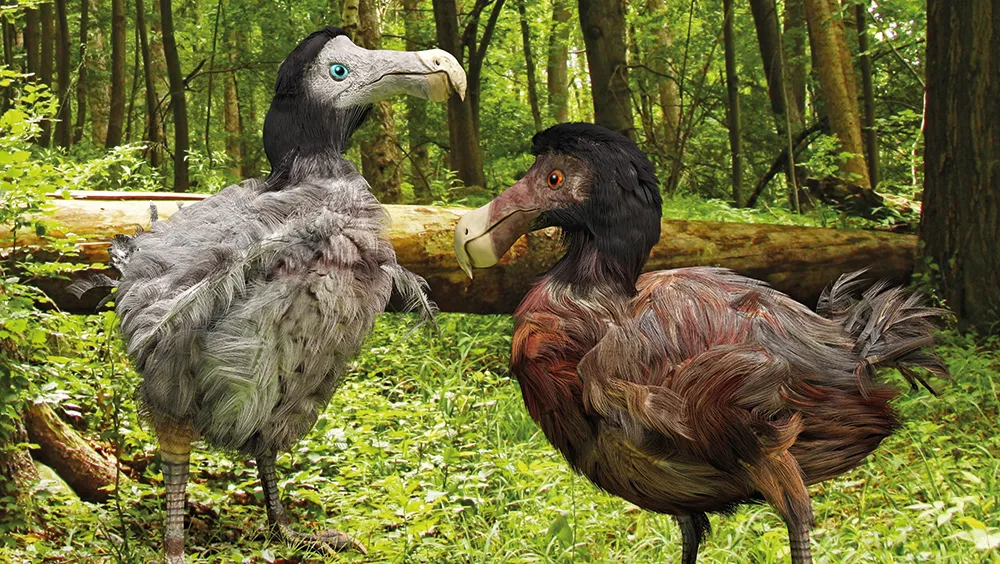
Then there are the benefits that humans could glean. The gastric-brooding frog somehow converted its stomach into a makeshift womb. It stopped producing stomach acid so it didn’t digest its young. If scientists could figure out the changes involved in this, it could lead to treatments for stomach ulcers or could help people recovering from stomach surgery.
Every day, between 30 and 150 species disappear from the face of our planet, and studies reveal that extinction rates today are 1,000 times higher than they were during pre-human times.
We live in a time of mass extinction, and de-extinction has been proposed as a key way to undo some of that harm. To reverse extinction would undoubtedly be a huge moment for the fields of biology and conservation, and a feat that could motivate future generations of scientists and wildlife defenders.
Where would the animals live?
De-extinction is a process that begins with creating a single animal in the lab and then ends, many years later, with the release and survival of sustainable populations in the wild.
Ecosystems are fluid, dynamic entities – they change quickly. But if a species has gone extinct recently, there is a chance it could be returned to its original ecosystem. The Tasmanian tiger is thought to have gone extinct 80 years ago, but in that time, its native woodland has stayed more or less the same – this de-extinct species could potentially ‘go home’.
A de-extinct Christmas Island rat, however, would not be so lucky. Since its extinction over 100 years ago, Christmas Island has become riddled with invasive species that would likely pose a problem. In this case, a suitable alternative habitat would have to be found.
What is the ideal candidate for de-extinction?
It may seem an odd thing to say, but one of the ideal de-extinction candidates could be an animal that is actually still alive… just.
There are only two northern white rhinos left alive on the planet, both of them female, who spend their days at the Ol Pejeta Conservancy in Kenya. But they are too old, too ill and too related to breed naturally.
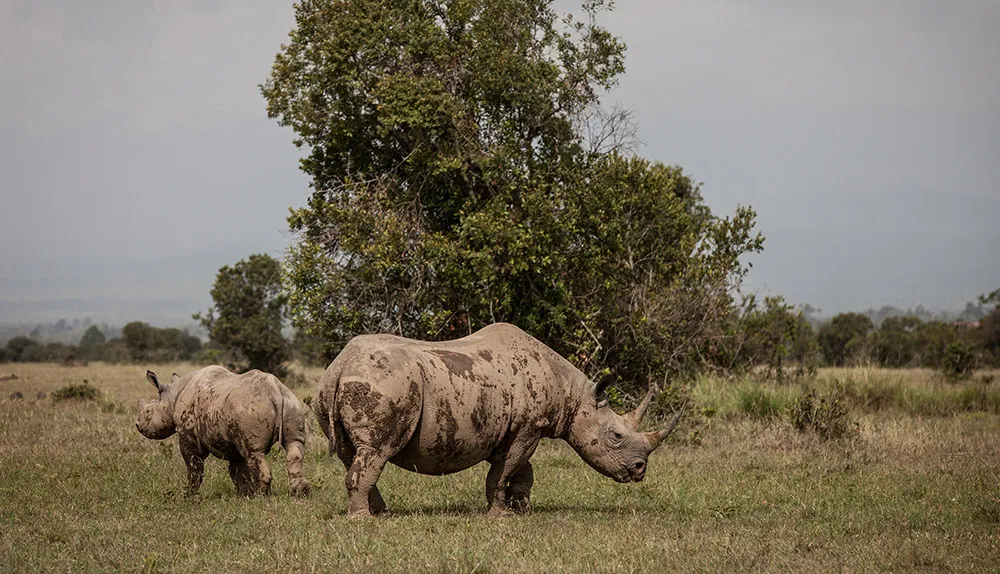
So the northern white rhino is ‘functionally extinct’: the ghost of a magnificent species that once manicured the diverse African grasslands on which so many other species depend.
Saving it counts as an act of de-extinction. For many reasons, it’s easier to de-extinct an animal from the recent past than it is from dim and distant history. But it’s easier still to focus on those that are still with us. The northern white rhino is currently the focus of a de-extinction project.
Is it ethical to resurrect extinct animals?
Some people are against de-extinction because they say it feels unnatural. They are wary of genetic modification and accuse scientists of playing God. But proponents argue that the techniques being developed to make de-extinction happen all have natural counterparts in the wild.
For example, there are species of lizard that reproduce via cloning, while the gene-editing process being used to bring back the mammoth hails from a primitive bacterial immune system.
Just as IVF has become an accepted medical technique, so de-extinction researchers hope that concerns about their experiments will fade once the science has proved its worth.
Critics also claim that de-extinction is stealing funds and attention from traditional conservation efforts.
But none of the big wildlife charities are putting any money into de-extinction, and a big resurrection success story could even help to draw attention to the plight of the world’s wildlife, rather than detract from it.
It’s true that it’s still too early to know exactly how de-extinction will pan out, but its supporters argue that if we don’t at least develop the technology needed to make it happen, we’ll never make a genuine assessment of its worth.
Could we bring back our pets?

The labs at Sooam Biotech Research Foundation in Seoul, South Korea, regularly produce cloned dogs for the Korean National Police Agency and will even clone your pet pooch for around £65,000.
But although the doppelganger will look like your faithful friend, it will never be the same. Just as identical twins develop different personalities, physical characteristics and diseases, ‘Fido II’ will grow into a different dog.
And how about… Elvis?
If we can resurrect animals, could we bring back long-dead humans? In theory, it’s possible. Take Elvis Presley as an example. Scientists could retrieve DNA from some of his iconic quiff, sequence his full genetic code, edit the ‘genetic essence’ of Elvis into a regular human cell and then use that to create a cloned baby.
In reality, though, it’s a terrible idea.

Reproductive human cloning is illegal and unethical, and the process carries many risks.
What’s more, a clone of Elvis may well end up more into drum ’n’ bass and Dr Martens than rock ’n’ roll and blue suede shoes.
But this cheeky thought experiment does show how far the science underpinning de-extinction can take us. Elvis? Maybe not.
But woolly mammoths and Tasmanian tigers? Don’t bet against it.
- This article first appeared in issue 301 of BBC Focus Magazine - find out how to subscribe here
Jargon buster
Cloning - This is one of the principle methods used to bring back certain animals. DNA from an adult cell is coaxed into a more youthful state, which is then used to create an animal that’s almost genetically identical to the donor.
Ecosystem -This is a biological community of interacting life forms and the space they live in. Healthy ecosystems are essential to the survival of life on Earth: they provide services including purifying the air, pollinating our crops and sequestering carbon.
Gene editing -The ability of scientists to alter the DNA of living things with pinpoint accuracy. The core components of DNA
can now be removed, replaced or added to at will using a process called CRISPR-Cas9.
Resurrection biology -Another term for de-extinction. This blend of high-tech methods is enabling scientists to bring back species from the brink of extinction and beyond.
Stem cell -These versatile ‘shape-shifting’ cells can turn into other cell types. Scientists have made northern white rhino stem cells, and next plan to use them to produce eggs and sperm for rhino IVF.
De-extinction: what we still don't know
1
How cloning works
Although we’ve been cloning animals for years, we still don’t understand how it actually works.
During the process, DNA inside an adult cell is somehow reprogrammed to a more youthful state, so that it can drive embryonic development.
It’s like restoring the factory setting on your phone, but no one knows exactly how it happens or how to fully control it.
Crack that, and scientists stand a better chance of creating healthy, viable animals.
2
How resurrected animals will be protected
To qualify for legal protection, an organism must be listed as endangered, but for that, the animal must be living in the wild.
The first few generations of any newly resurrected species would be kept in captivity while researchers checked their health, so during this time their legal status would be uncertain.
Without protection, the animals could be threatened by poaching or habitat loss.
3
How de-extinct animals will fare in the wild
When it comes to releasing the animals, all we can do is study their previous ecology, and send them into the most suitable environment available.
We’ll then need to monitor them carefully: it’s vital to know why a species went extinct first time round, to make sure it doesn’t happen again.
With each successive re-wilding attempt, we’ll learn more about maximising the animals’ chances of survival.
Cloning in a nutshell
We’re turning back time - Scientists are on the verge of being able to reverse extinction. They are taking DNA from fossils and museum specimens, and using some fancy, high-tech science to make copies of various extinct animals.
It’s all for a reason - The idea isn’t to create some lonely zoo exhibit or biological freak, but to generate entire populations of healthy animals that can breed naturally and live sustainably in the wild.
Through their actions, and the positive effects they have on other species in their ecosystem, de-extinct species could help boost the overall levels of biodiversity.
A new era for conservation? - Despite the best efforts of conservationists, species are going extinct at an alarming rate. De-extinction is new, unfamiliar and untested, but it could become a vital instrument in the conservationist’s toolbox.
Over the coming decades, we’ll be able to assess its worth and decide how, or indeed ‘if’, the technology should be used.